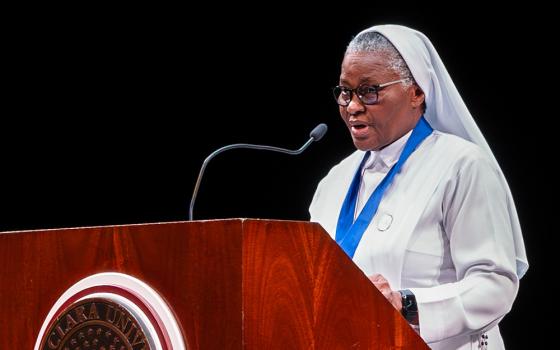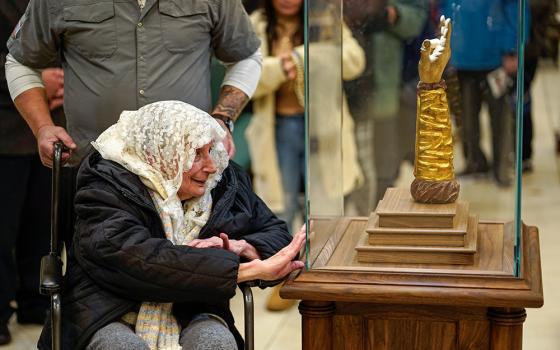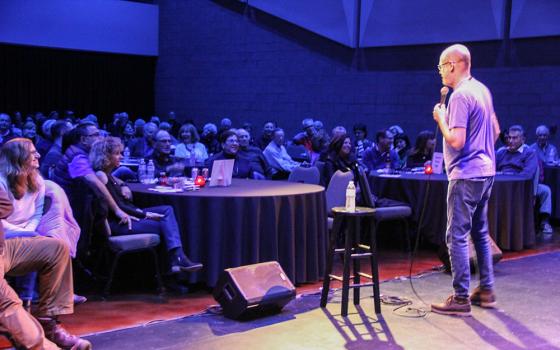Given the generally liberal, progressive bent of most NCR readers, I have found that visitors to this web site have -- what I think is -- an inordinate interest in the cappa magna. If you don't know what a cappa magna is, please see the accompanying photo and description.
|
Such photos generally enrage typical NCR-types. But I wonder if the anger could be dissipated if they better understood what the cappa magna is all about. For that explanation, I point you to this comment left on another discussion page by reader RJM:
"[Here is] a letter that (Msgr.) Patrick Brankin, Director of Communications for the Diocese of Tulsa, recently sent to America Magazine:
"Please allow me to respond to two letters that appeared in your May 31 issue concerning the liturgical use of the cappa magna at the solemn pontifical Mass celebrated by Bishop Slattery in Washington, D.C.
Bishop Slattery has received close to 2,000 letters and e-mail messages from 13 countries around the world commenting on the prayerfulness of that Mass and the depth of comfort the faithful found in his homily.
The cappa magna does indeed represent the finery of the world, its power and prestige. That is why after his entrance wearing it, the prelate is publicly stripped of this finery and humbled before the congregation. Then, vestment by vestment, the bishop is clothed in the new man of which St. Paul speaks, including the baptismal alb, the dalmatic of charity, the stole of pardon and the chasuble of mercy. When finally clothed in Christ, the prelate makes a second entrance into the church to begin the eucharistic celebration in persona Christi, the visible head of the body, the church.
It was a clear statement that the power and prestige of the world have no place at the altar, but it is expressed in a liturgical ritual or symbol, which, unfortunately, are often lacking in the contemporary rites and thus hard to grasp."
 On April 24 this year I finally saw the grandiose display of the “cappa magna,” the 20-yard-long brilliant red train behind a bishop or cardinal that has come to be one of the symbols of the revival of the Tridentine Mass.
On April 24 this year I finally saw the grandiose display of the “cappa magna,” the 20-yard-long brilliant red train behind a bishop or cardinal that has come to be one of the symbols of the revival of the Tridentine Mass.



